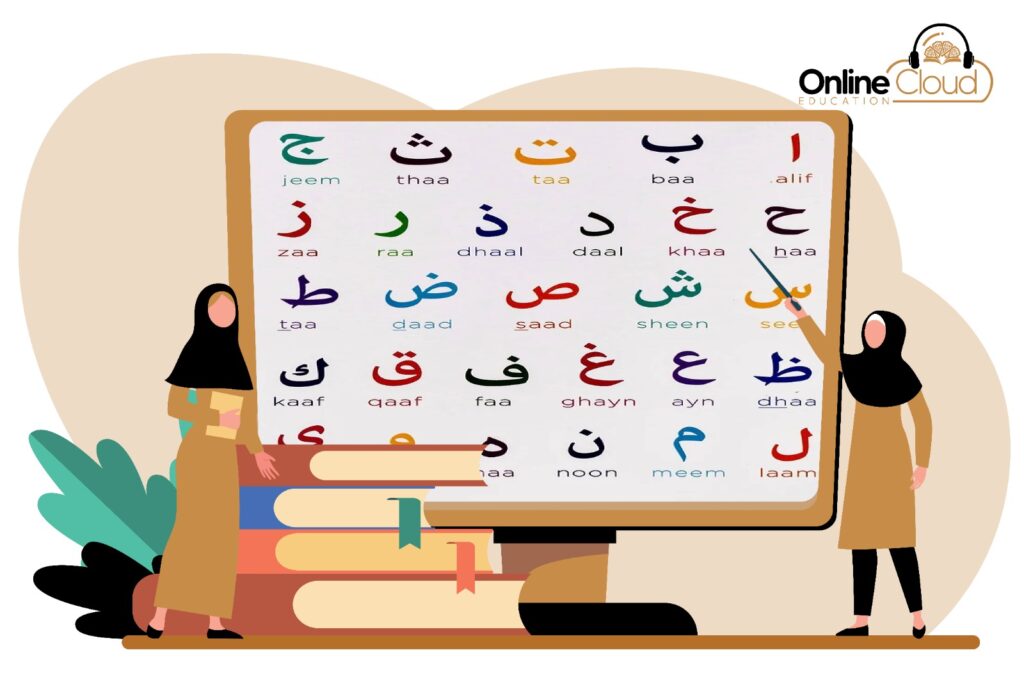Islamic Course for Men and Women and Learning How to Read the Quran with Tajweed. Welcome to Online Cloud Education‘s complete guide to learning how to read the Quran with our custom Tajweed course. This study is meant to help students of all levels learn more about the Quran and improve their ability to read it correctly and beautifully.

Introduction to the Course: Improving Recitation
Reading from the Quran is more than just reading words; it’s about sending a deep message with accuracy and respect. Tajweed is a set of rules that ensure every word of the Quran is read properly, keeping it holy and beautiful. We want everyone to learn Tajweed at Online Cloud Education, no matter their background or how well they speak it. Come with us as we talk about the art of perfected memorization and how it can change how you connect with the Quran.
Course Outline: The Online Quran Tajweed

How Tajweed Works and Why It’s Important
Anyone who wants to learn how to read the Quran correctly needs to understand the basic rules of Tajweed. These rules tell you how to say each Arabic letter and word in the Quran correctly so that you can read it clearly and correctly
Makhaarij (Letter Articulation Points)
Learning the articulation places (Makhaarij) of Arabic letters is one of the most important parts of Tajweed. This lesson is all about teaching students the exact points of articulation for each letter so that they can say words clearly and correctly.
Sifaat (What Letters Are Like)
There are special things about each Arabic letter (Sifaat) that affect how it is pronounced. This module goes into these traits in more depth, which helps students tell the difference between sounds that are similar and say letters properly in different situations.
Qalqalah means “echoing sounds”
Qalqalah is the sound that some letters make when they repeat or bounce back in certain verses of the Quran. This lesson explains the rules of Qalqalah and shows students how to use this complex pronunciation when they recite.
What to Do at Noon and MeemMushaddadah
When the words Noon and Meem are doubled (Mushaddadah) in the Quran, they must be pronounced in a certain way. This lesson goes over these rules to make sure that students can say these letters correctly and keep up with the recitation.
Rules of Madd (Getting Longer)
In some verses of the Quran, vowels are made longer by “madd,” which means “lengthening.” This lesson goes over the rules of Madd and teaches students when and how to lengthen vowels for rhythmic and melodic reading.
Changes to the rules of qalb
In Qalb, the way you say certain letters change depending on what letters or sounds come after them. This lesson breaks down the rules of Qalb so that students can understand them and use them correctly in their recitation.
Waqa’f (Rules for Pausing and Stopping)
When reading the Quran, it is important to pause and stop at the right times (Waqa’f) to keep the message and flow. This module goes over the rules of Waqa’f and shows students when and how to stop while they are reciting.
How to Follow Lam Al-Shamseeyah and Lam Al-Qamareeyah
Two kinds of Lam, Lam Al-Shamseeyah and Lam Al-Qamareeyah, change how they sound depending on the vowels around them. This module makes these rules clearer so that students can say Lam letters properly and improve their reading.
Different levels of Tafkheem (heavy) and Tarqeeq (light)
Understanding the difference between Tafkheem (pronounced with more emphasis) and Tarqeeq (pronounced with less emphasis) improves the rhythm of reading the Quran. This lesson goes over these levels to help students learn how to recite in a balanced and melodic way.
Sakt means “quiet pause”
In reading the Quran, the silent breaks (Sakt) give people time to think and understand. This module talks about the idea of Sakt and how important it is for keeping the purity of recitation.
Ghunnah means “nose sound”
The nasal sound that is made when certain letters are pronounced in a certain way is called ghunnah. This module teaches students the right way to say Ghunnah, which gives their readings more meaning and resonance.
Assimilation in Idgham
Idgham is a way of reading the Quran that combines or assimilates sounds. This lesson explains the rules of Idgham so that students can use these subtleties in their recitation correctly.
Where you can learn the Quran
online cloud education provides online Quranic education like the Quran with proper Tajweed, Basic Quran reading for kids, Quran recitation, Quran memorization, Islamic studies, Tafseer, Ijazah, Tarbyah, Qirat, Prayer lessons, etc. Whatever you want you can learn from the comfort of your home at an affordable price. So visit onlinecloudeducation and register now or click the below button.
Conclusion
With Online Cloud Education‘s Tajweed course, you can start a trip that will change the way you read the Quran. Our course gives you all the information you need to deepen your relationship with the Quran through precise and beautiful recitation, whether you are just starting or want to improve your skills. Start growing spiritually today with Online Cloud Education and hear the deep beauty of reading the Quran.





